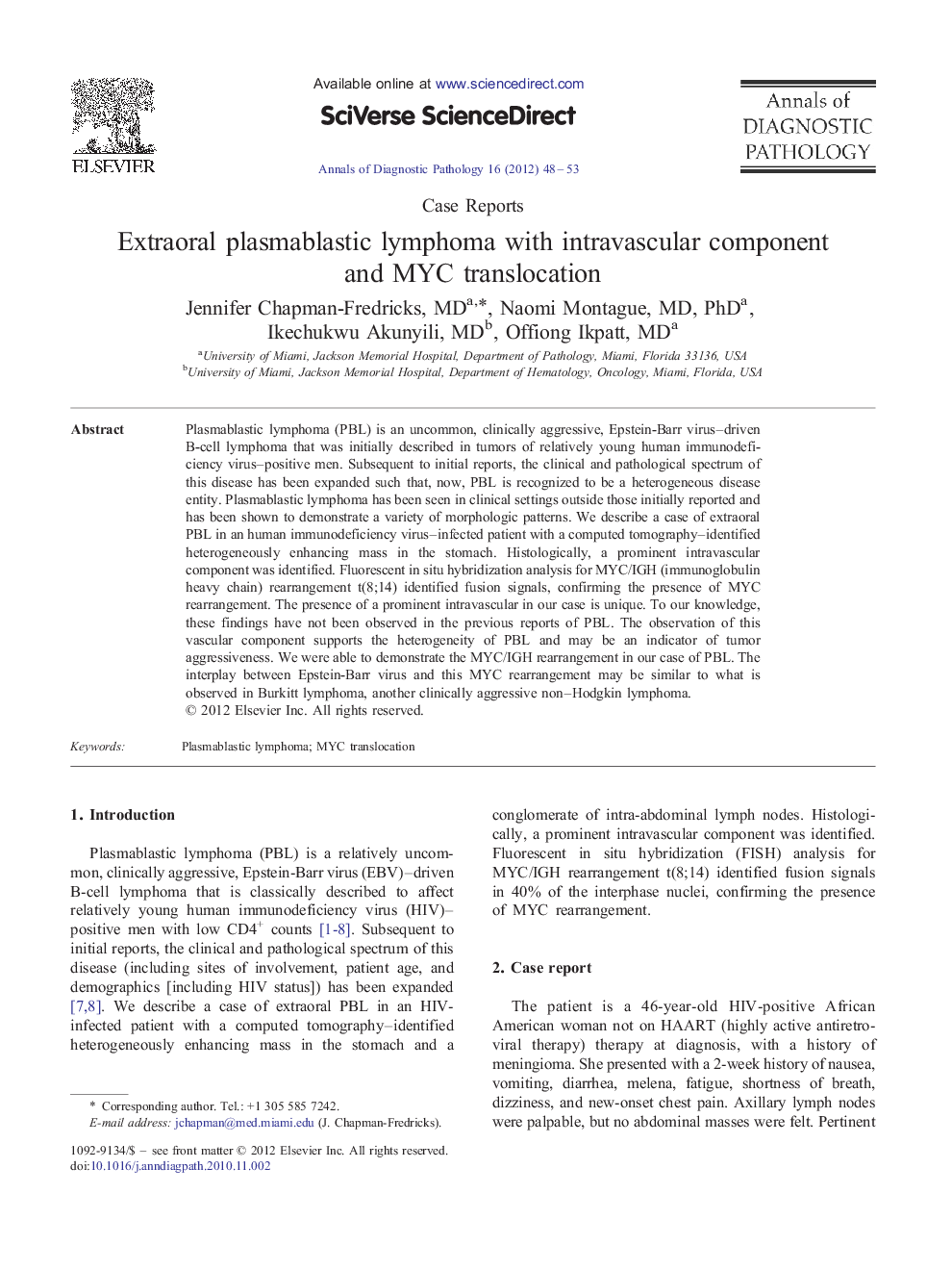| Article ID | Journal | Published Year | Pages | File Type |
|---|---|---|---|---|
| 6215156 | Annals of Diagnostic Pathology | 2012 | 6 Pages |
Plasmablastic lymphoma (PBL) is an uncommon, clinically aggressive, Epstein-Barr virus-driven B-cell lymphoma that was initially described in tumors of relatively young human immunodeficiency virus-positive men. Subsequent to initial reports, the clinical and pathological spectrum of this disease has been expanded such that, now, PBL is recognized to be a heterogeneous disease entity. Plasmablastic lymphoma has been seen in clinical settings outside those initially reported and has been shown to demonstrate a variety of morphologic patterns. We describe a case of extraoral PBL in an human immunodeficiency virus-infected patient with a computed tomography-identified heterogeneously enhancing mass in the stomach. Histologically, a prominent intravascular component was identified. Fluorescent in situ hybridization analysis for MYC/IGH (immunoglobulin heavy chain) rearrangement t(8;14) identified fusion signals, confirming the presence of MYC rearrangement. The presence of a prominent intravascular in our case is unique. To our knowledge, these findings have not been observed in the previous reports of PBL. The observation of this vascular component supports the heterogeneity of PBL and may be an indicator of tumor aggressiveness. We were able to demonstrate the MYC/IGH rearrangement in our case of PBL. The interplay between Epstein-Barr virus and this MYC rearrangement may be similar to what is observed in Burkitt lymphoma, another clinically aggressive non-Hodgkin lymphoma.
